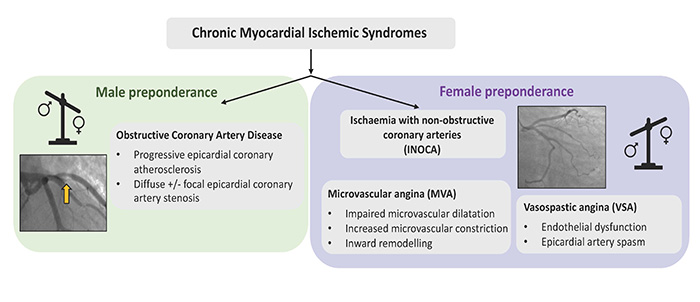New Paper Led by Jaclyn Carberry
Published: 24 May 2023
Reappraising Ischemic Heart Disease in Women paper led by Jaclyn Carberry
Reappraising Ischemic Heart Disease in Women
Jaclyn Carberry, Louise Aubiniere-Robb, Anna Kamdar, Harriet Lomholt-Welch, Colin Berry

Introduction
This review paper defines the sex-related disparities in the diagnosis, management and prognosis of ischaemic heart disease in women, outlines ongoing research in ischaemic heart disease in women and highlights strategies for eliminating sex-related disparities in ischaemic heart disease.
Abstract
Despite advances in the management of ischemic heart disease worldwide, mortality in women remains disproportionally high in comparison to men, particularly in women under the age of 55. The greater prevalence of ischemic with non-obstructive coronary arteries (INOCA) in women has been highlighted as a potential cause of this disparity. Moreover, current guideline recommendations for computed tomography coronary angiography (CTCA) as the first line of investigation for stable chest pain may further amplify this inequality. Traditional cardiovascular risk factors carry greater influence in women than men in the development of ischemic heart disease. Despite this, women have been consistently under-represented in large-scale clinical trials. Chest pain in women is more likely to be overlooked due to the higher likelihood of atypical presentation and normal anatomical imaging, despite persistent symptoms and decreased quality of life indicators.
Accordingly, we call into question a CTCA-first approach in clinical guidelines;instead, we favor a personalized, patient first approach. Due to the misdiagnoses of ischemic heart disease in women, a large proportion are denied access to preventative therapy. This is especially true of women with INOCA, for which there is a critical lack of specific guidelines and rigorous evidence-based therapies. Ongoing clinical trials aim to identify potential management options that may benefit those with INOCA, bringing the field closer to eliminating sex-related disparities in the diagnosis, arrangement and prognosis of ischemic heart disease."
First published: 24 May 2023

